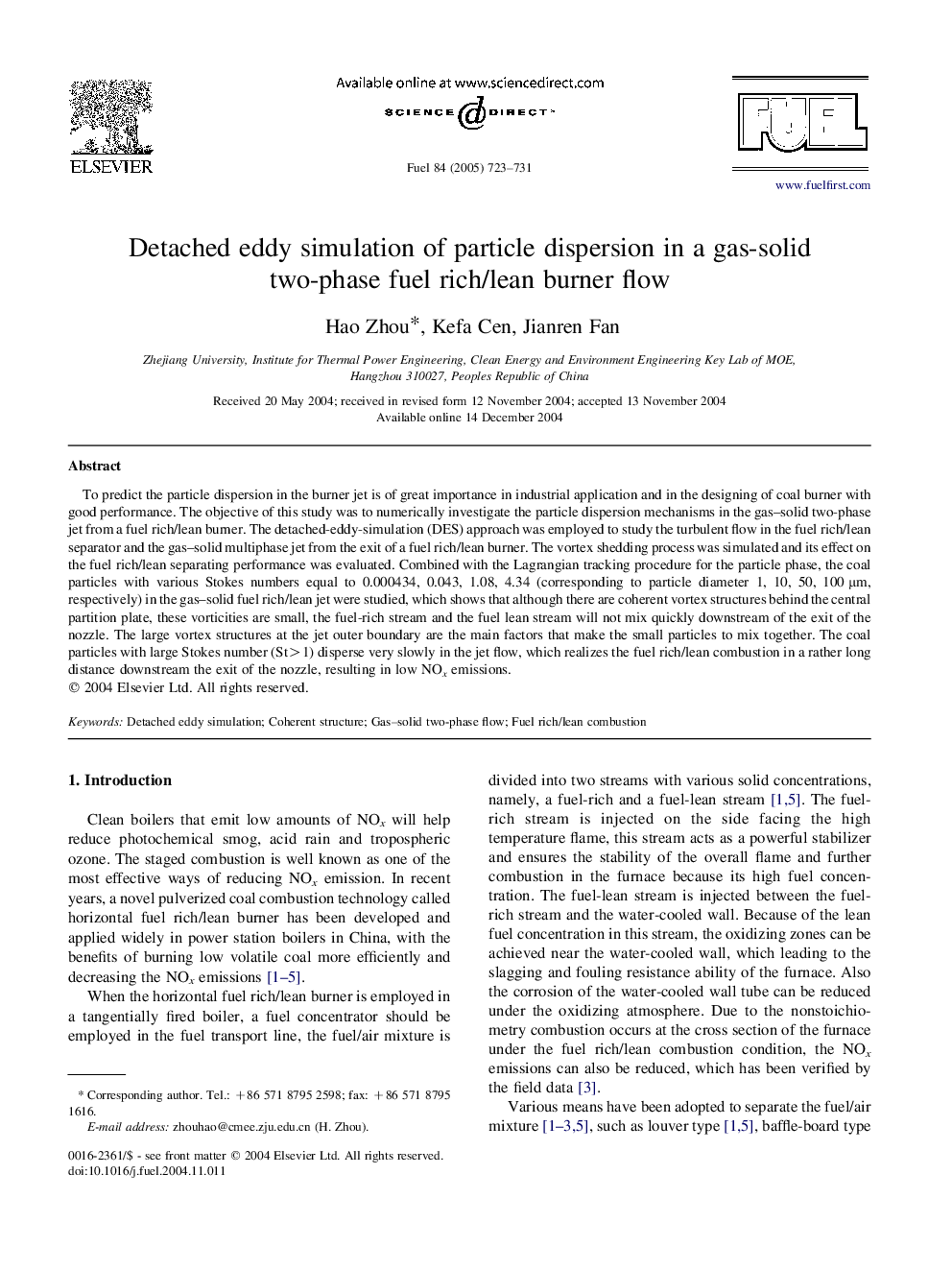| Article ID | Journal | Published Year | Pages | File Type |
|---|---|---|---|---|
| 10273775 | Fuel | 2005 | 9 Pages |
Abstract
To predict the particle dispersion in the burner jet is of great importance in industrial application and in the designing of coal burner with good performance. The objective of this study was to numerically investigate the particle dispersion mechanisms in the gas-solid two-phase jet from a fuel rich/lean burner. The detached-eddy-simulation (DES) approach was employed to study the turbulent flow in the fuel rich/lean separator and the gas-solid multiphase jet from the exit of a fuel rich/lean burner. The vortex shedding process was simulated and its effect on the fuel rich/lean separating performance was evaluated. Combined with the Lagrangian tracking procedure for the particle phase, the coal particles with various Stokes numbers equal to 0.000434, 0.043, 1.08, 4.34 (corresponding to particle diameter 1, 10, 50, 100 μm, respectively) in the gas-solid fuel rich/lean jet were studied, which shows that although there are coherent vortex structures behind the central partition plate, these vorticities are small, the fuel-rich stream and the fuel lean stream will not mix quickly downstream of the exit of the nozzle. The large vortex structures at the jet outer boundary are the main factors that make the small particles to mix together. The coal particles with large Stokes number (St>1) disperse very slowly in the jet flow, which realizes the fuel rich/lean combustion in a rather long distance downstream the exit of the nozzle, resulting in low NOx emissions.
Related Topics
Physical Sciences and Engineering
Chemical Engineering
Chemical Engineering (General)
Authors
Hao Zhou, Kefa Cen, Jianren Fan,
